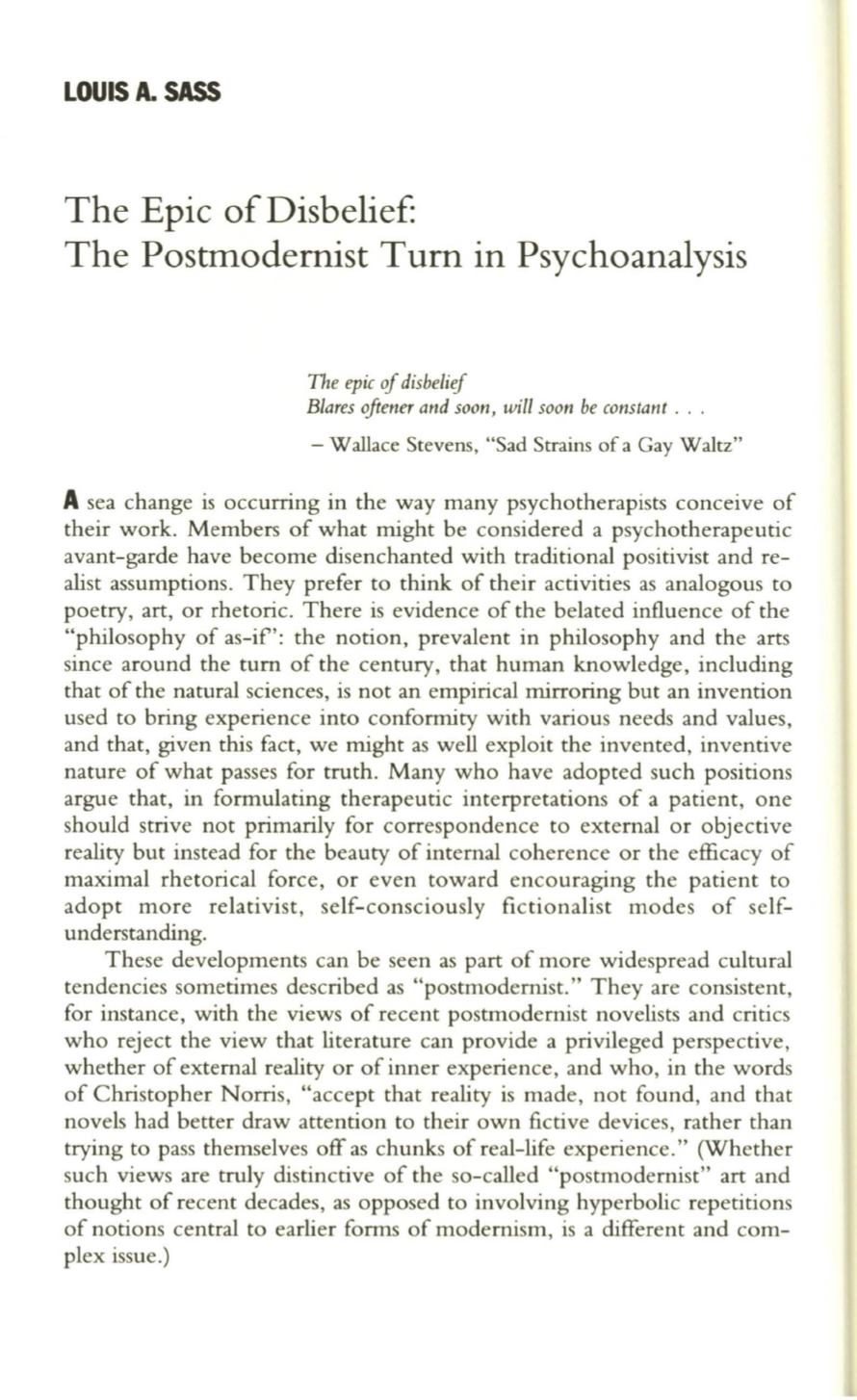
LOUIS A. SASS
The Epic ofDisbelief
The Postmodernist Tum in Psychoanalysis
The epic
of
disbelief
Blares oftener and soon, will soon be constant
. ..
- Wallace Stevens, "Sad Strains
of
a Gay Waltz"
A
sea change is occurring in the way many psychotherapists conceive of
their work. Members of what might be considered a psychotherapeutic
avant-garde have become disenchanted with traditional positivist and re–
alist assumptions. They prefer to think of their activities as analogous to
poetry, art, or rhetoric. There is evidence of the belated influence of the
"philosophy of as-if': the notion, prevalent in philosophy and the arts
since around the tum of the century, that human knowledge, including
that of the natural sciences, is not an empirical mirroring but an invention
used to bring experience into conformity with various needs and values,
and that, given this fact, we might as well exploit the invented, inventive
nature of what passes for truth. Many who have adopted such positions
argue that, in formulating therapeutic interpretations of a patient, one
should strive not primarily for correspondence to external or objective
reality but instead for the beauty of internal coherence or the efficacy of
maximal rhetorical force, or even toward encouraging the patient to
adopt more relativist, self-consciously fictionalist modes of self–
understanding.
These developments can be seen as part of more widespread cultural
tendencies sometimes described as "postmodernist." They are consistent,
for instance, with the views of recent postmodernist novelists and critics
who reject the view that literature can provide a privileged perspective,
whether of external reality or of inner experience, and who, in the words
of Christopher Norris, " accept that reality is made, not found , and that
novels had better draw attention to their own fictive devices, rather than
trying to pass themselves off as chunks of real-life experience." (Whether
such views are truly distinctive of the so-called "postmodernist" art and
thought of recent decades, as opposed to involving hyperbolic repetitions
of notions central to earlier forms of modernism, is a different and com–
plex issue.)


